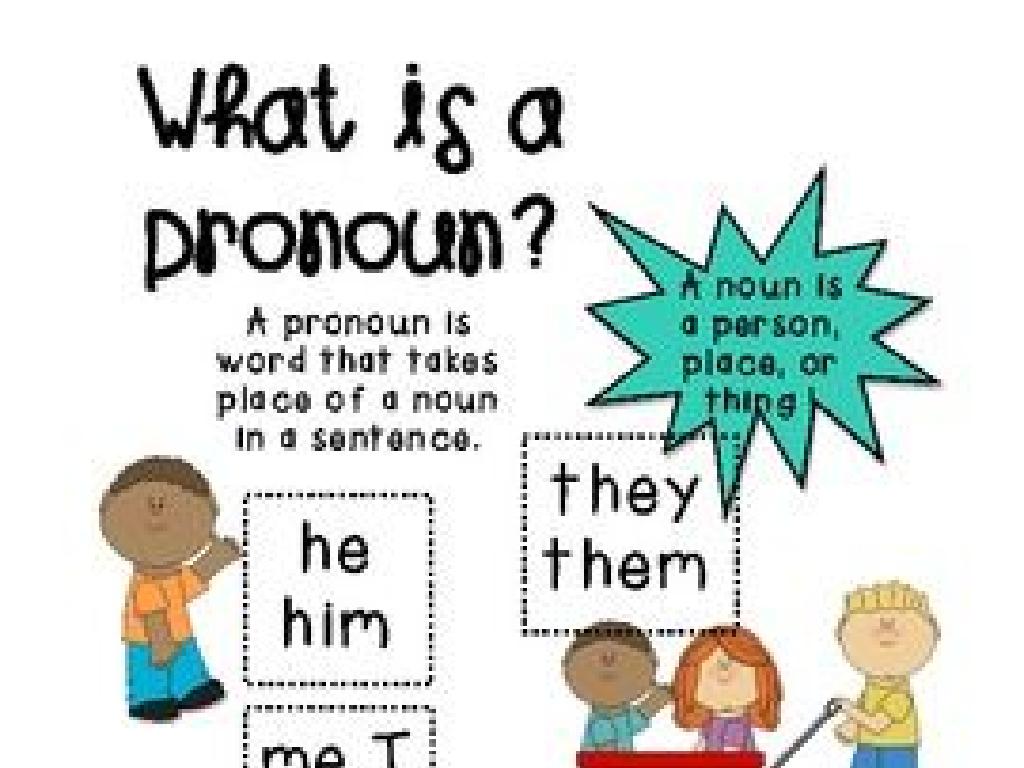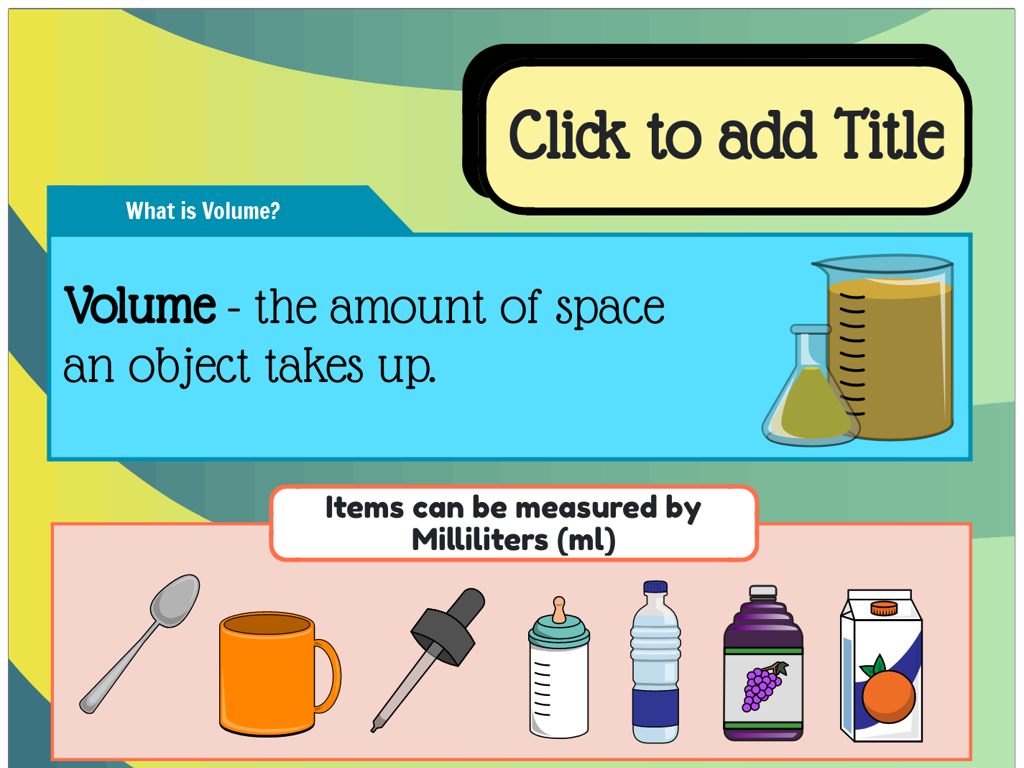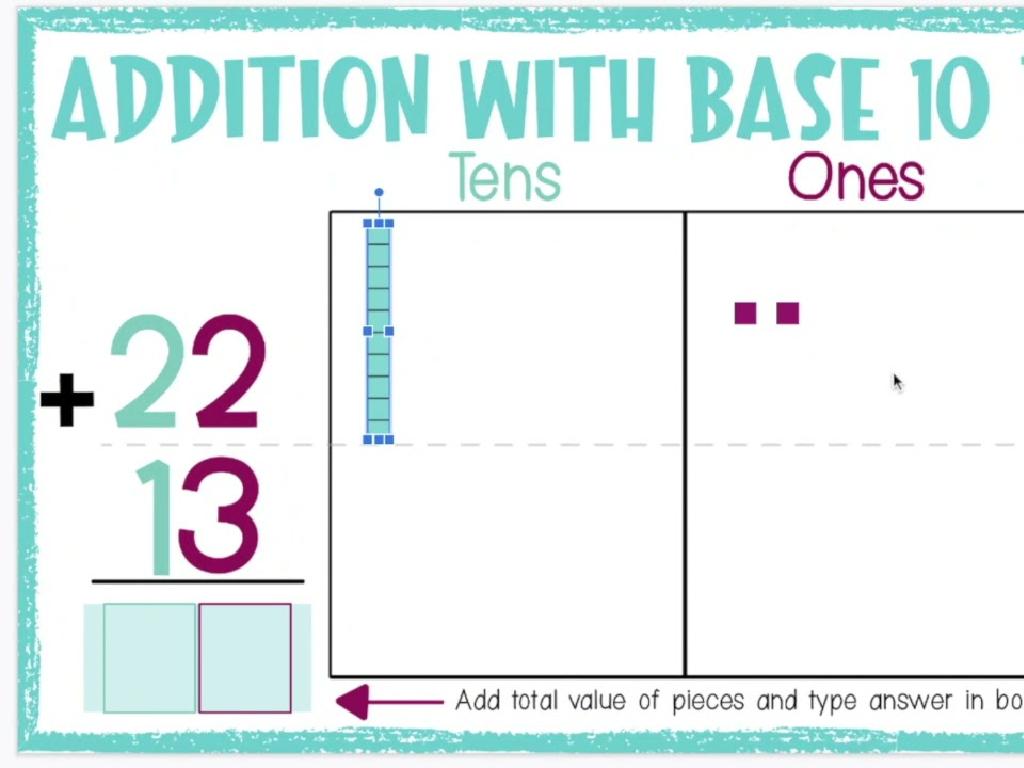The Civil War: The Beginning Of The War
Subject: Social studies
Grade: Fifth grade
Topic: The Civil War And Reconstruction
Please LOG IN to download the presentation. Access is available to registered users only.
View More Content
The Civil War – The Beginning
– What was the Civil War?
– A conflict between Northern and Southern states of the US from 1861-1865.
– Causes of the Civil War
– Issues like slavery and states’ rights led to the war.
– Key figures and battles
– Learn about Abraham Lincoln, Jefferson Davis, and the Battle of Fort Sumter.
– How it shaped our nation
– The war’s outcome affected laws and society in America.
|
This slide introduces the Civil War, aiming to connect past events with the present and future. Begin by asking students what they already know about the Civil War to assess their prior knowledge. Explain that the Civil War was a pivotal event in American history, fought over deep-seated political and social differences, primarily the issue of slavery. Highlight key figures such as Abraham Lincoln and Jefferson Davis, and mention the first battle at Fort Sumter to give a sense of the war’s start. Emphasize the lasting impact of the Civil War on the United States, including changes in laws and the continued fight for civil rights. This sets the stage for a deeper exploration of the Civil War in subsequent lessons.
What Was the Civil War?
– Civil War: Union vs. Confederacy
– North (Union) fought the South (Confederacy)
– Fought over states’ rights, slavery
– Disagreements on state power and freedom of enslaved people
– Lasted from 1861 to 1865
– Four years of intense battles
– Deadliest American war
– More Americans died than in any other war
|
The Civil War was a pivotal event in American history, marking a conflict between the Northern states (known as the Union) and the Southern states (the Confederacy). The war was primarily fought over the power of individual states versus the federal government and the moral and economic issues surrounding slavery. Spanning four years, the war featured many significant battles and led to a great loss of life, making it the deadliest war in the nation’s history. When discussing this with students, emphasize the scale of the conflict and its lasting impact on the country. Use maps to show the division between the Union and the Confederacy, and provide context for the social and political climate of the time.
Causes of the Civil War
– North vs. South differences
– The North had more industry, while the South had plantations.
– States vs. federal rights
– States wanted more power over their own laws, separate from the federal government.
– Conflict over slavery
– Slavery was a major issue dividing the nation.
– Lincoln’s election impact
– Some states seceded after Lincoln was elected, fearing changes to slavery laws.
|
This slide aims to introduce students to the complex causes leading up to the Civil War. Discuss the economic and social differences, such as the industrialized North versus the agrarian South, and how these differences contributed to the conflict. Explain the concept of states’ rights versus federal authority, and why some states felt their rights were being overpowered by federal decisions. Highlight the central role of slavery in causing division and how the election of Abraham Lincoln, who was seen as anti-slavery, led to the secession of Southern states. Use maps and timelines to help students visualize the differences between the regions and the sequence of events. Encourage students to ask questions and think critically about how these factors could lead to such a significant conflict.
Key Figures of the Civil War
– Abraham Lincoln’s role
– Lincoln led the U.S. during the Civil War and aimed to unite the nation.
– Jefferson Davis’ leadership
– Davis served as President of the Confederacy, leading the southern states.
– Generals of the Union
– Union generals like Ulysses S. Grant fought to preserve the Union.
– Generals of the Confederacy
– Confederate generals, such as Robert E. Lee, fought for the southern states.
|
This slide introduces students to the key figures of the Civil War, highlighting the roles of Abraham Lincoln and Jefferson Davis as the presidents of the Union and the Confederacy, respectively. It also touches on the important generals from both sides, such as Ulysses S. Grant for the Union and Robert E. Lee for the Confederacy. Emphasize Lincoln’s efforts to keep the country united and Davis’ role in leading the secessionist states. Discuss the military leadership and strategies of the generals, and how their decisions shaped the course of the war. Encourage students to explore the motivations and actions of these figures to gain a deeper understanding of the Civil War’s beginnings.
The Civil War: The Start of the War
– Attack on Fort Sumter
– April 1861: Confederacy bombarded Fort Sumter, starting the war
– Union fort in South Carolina
– A key location held by Union forces in Confederate territory
– No initial casualties
– Sparked a four-year conflict
– This event led to the long and bloody American Civil War
|
This slide introduces the beginning of the Civil War, marked by the Confederate attack on Fort Sumter in April 1861. It’s important to convey the significance of this event without glorifying the violence. Emphasize that, despite no immediate loss of life, the attack on Fort Sumter was a pivotal moment that led to a long and devastating conflict. Discuss the strategic importance of Fort Sumter and its location in South Carolina, a Confederate state, which made it a symbol of Union authority in the South. The slide sets the stage for understanding the complex causes and consequences of the Civil War.
Life During the Civil War
– Daily life of soldiers
– Soldiers lived in camps, wrote letters home
– Women’s roles in the war
– Women worked as nurses, spies, and took over men’s jobs
– Families affected by the war
– Families often faced shortages and had to support the war effort
– Children’s experiences
– Many children had to grow up quickly, some even served as drummers or messengers
|
This slide aims to give students a glimpse into the personal side of the Civil War, beyond the battles and politics. Discuss the challenging conditions soldiers faced in camps and how they stayed in touch with their families through letters. Highlight the significant contributions of women who stepped into unconventional roles for the time, including nursing, espionage, and managing farms or businesses. Address the hardships endured by families, such as scarcity of goods and the emotional toll of having loved ones at war. Finally, talk about the impact on children, who were often forced to take on adult responsibilities or even participate in the war effort. Encourage students to empathize with people from this era and consider how the war affected everyday life.
Map Study: A Nation Divided
– Identify Union vs. Confederate states
– Use a map to distinguish between the North (Union) and the South (Confederate).
– Strategic battle locations
– Key battle sites often near rivers or railroads for supplies and movement.
– Significance of border states
– Border states like Kentucky and Missouri were crucial due to their location and resources.
– Impact on the war’s progression
|
This slide aims to help students visually understand the geographical divide during the Civil War. They should learn to identify the Union and Confederate states, as well as the key border states that played a significant role due to their strategic locations. Discuss why certain areas were chosen for major battles, considering factors like terrain, transportation routes, and proximity to resources. Emphasize how geography could influence the war’s outcome. Encourage students to think about how living in a border state might have affected people’s lives during that time. This discussion will set the stage for understanding the complexities of the war and its impact on the United States.
Role Play: Debating Civil War Causes
– Divide into Union and Confederate groups
– Prepare arguments from your side
– Think like historical figures from your assigned side
– Engage in a peaceful debate
– Use respectful language and listen to others
– Understand different perspectives
– Learn why each side fought in the war
|
This class activity is designed to help students actively engage with the history of the Civil War by taking on the roles of the Union and Confederate sides. Divide the class into two groups and assign them to either the Union or the Confederacy. Provide each group with key points and arguments that were central to their side’s perspective. Encourage students to research and prepare their arguments, focusing on the causes of the Civil War. During the debate, remind students to use respectful language and listen to the opposing side’s arguments. This activity aims to foster a deeper understanding of the complex issues that led to the Civil War and the differing viewpoints of the time. Possible activities for different students could include representing different states, political leaders, or average citizens from the era.
Reflecting on the Civil War
– Importance of learning the Civil War
– It helps us understand how the U.S. shaped its values and freedom.
– ‘What if’ the war ended differently
– Imagine how different America might be in terms of laws, rights, and society.
– Lessons from the Civil War era
– We learn about unity, the cost of conflict, and the value of progress.
|
This slide aims to provoke thoughtful reflection and discussion among students about the Civil War’s significance. It’s crucial for students to recognize the Civil War as a pivotal moment in American history that defined the nation’s values and the concept of freedom. Encourage them to ponder alternative historical outcomes and how they might have impacted the modern United States in terms of laws, rights, and societal structure. Discuss the lessons that can be drawn from this period, such as the importance of unity, the heavy toll of conflict, and the ongoing pursuit of progress and equality. This discussion will help students apply historical understanding to contemporary issues and recognize the importance of learning from the past.
Homework: A Child’s View of the Civil War
– Write a Civil War diary entry
– Imagine you’re a child in the Civil War era. What would you write in your diary?
– Express thoughts on family life
– How might the war affect your family? Are they worried, busy, or scared?
– Describe your daily routine
– What would a typical day look like for you? Are there chores, games, or school?
– Reflect on the impact of the war
– Share your feelings about the war. Is it confusing, frightening, or do you see hope?
|
This homework assignment encourages students to empathize with children from the Civil War period by writing a diary entry. It’s a creative task that combines their knowledge of the era with imaginative thinking. Students should consider how the war might alter family dynamics, daily activities, and the general atmosphere at home. They should also reflect on the emotional impact of the war. Provide examples of diary entries to inspire them, and remind them of the due date. In the next class, create a discussion around the different perspectives they’ve written about, which will deepen their understanding of the Civil War’s societal impact.






